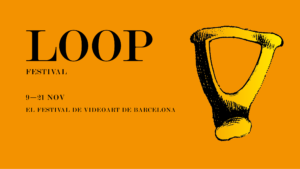‘Cossos Itinerants’ [Itinerant Bodies]: actions in the public space
— In collaboration with EINA - University School of Design and Art of Barcelona, Hangar.org and La Escocesa.
9 — 12 November 2021
![‘Cossos Itinerants’ [Itinerant Bodies]: actions in the public space](https://loop-barcelona.com/wp-content/uploads/2021/11/COSSOS-1-rotated.jpg)
The 'Itinerant Bodies' project explores the possibilities of networking and the value of public space as a meeting place. On November 9 and 12, a mobile device becomes the ephemeral stage to present the performative proposals by Valentina Alvarado Matos and Carlos Vásquez Méndez, Laura Arensburg, Julia Calvo, Natalia Carminati and Daniel Moreno Roldán, Queer Committee, Citlali Hernández and Núria Nia, Pedro Torres and Paula Serrano.
Background
Among other things, the arrival of Covid-19 caused the gradual withdrawal of bodies from public space. The need to counter the health threat led to the immediate and radical suppression of basic freedoms, generating a state of voluntary citizen submission in the name of health. The unexpected state of emergency highlighted the importance of emotional bonds and community networks, as well as the need for human “contact” despite the paradox of contagion.
Due to the diffuse precariousness and the total absence of social and legal systems of care, these same demands were manifested in the artistic community. In the face of the institutional vacuum, the only possible response was connection, support, mutual commitment, and the pooling of human and economic resources. To be “bodies open to the community,” as Merleau-Ponty put it, individuals sensitive to intertwining with others.
Crises often have the effect of radically exposing existing systemic problems, but then they need to be dealt with. While in the artistic field the most immediate and sensible proposals seem to have been born thanks to the associative initiative of artists themselves, where have the other agents of the ecosystem been then?
Itinerant (and intertwined) bodies
Taking these reflections as a starting point, this proposal aims to reflect on the possibilities of networking and the value of public space. It becomes an excuse to generate professional links and a platform for shared reflection. For this reason, it was addressed to the residents of Hangar.org and La Escocesa (art residencies both located in the Poblenou district), with the aim of fostering moments of exchange and a common work methodology.
An underlying questions was: “what does it mean to be a body?” Linking to the general theme of this edition of the Festival, the proposals of Valentina Alvarado Matos and Carlos Vásquez Méndez, Laura Arensburg, Julia Calvo, Natalia Carminati and Daniel Moreno Roldán, Citlali Hernández and Núria Nia, Queer Committee, Pedro Torres and Paula Serrano tells us about exposed, connected, pixelated bodies and traversed by time; of dissident, dependent, porous and powerful corporealities. Bodies that look and are looked at, that cross the city and are crossed by it. A series of ‘Itinerant Bodies’ and inevitably intertwined.
The performances will be presented at two different locations in the public space: the first, coinciding with the inauguration of the Festival on November 9, will take place at the Jardins de Rubió i Lluch; the second, on November 12 in the Plaça Joan Coromines.
The mobile device that will accompany the proposals has been conceived during the workshop ‘Mobile artifacts and Itinerant bodies’, organized in collaboration with EINA – University School for Design and Art of Barcelona, and with the participation of the students Irene Anglada Espadaler, Rafael Cribillés Alba, Gio Galindo (“Grupo Octubre”); Mercedes Almeida, Maria Bei Bellsolà López, Andrea Fernández Camps, Maria Verdù; Elisabet Callén Artola, Julieta Italiano, Felipe Román Osorio, Lucía Trigo González.
- The prototype presented by the students of the “Grupo Octubre” was the selected project. Pense (Head of Construction at Hangar.org) was in charge of adapting and building the device. The artifact has been co-produced in collaboration with Hangar.org.
9.11.2021 - Festival's opening @Jardins de Rubió lluch
12.11.2021 @Plaça Joan Coromines
Related pages

Professionals
Comitè Queer

Professionals
Natalia Carminati

Professionals
Daniel Moreno Roldán

Professionals
Julia Calvo

Professionals
Núria Nia

Professionals
Pedro Torres

Professionals
Citlali Hernández

Professionals
Laura Arensburg

Professionals
Carolina Ciuti

Professionals
Valentina Alvarado Matos

Professionals
Carlos Vásquez Méndez

Pages
LOOP Festival 2021
